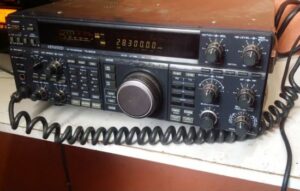In a world where the jewelry market has become globalized and digitalized, the line between an authentic piece and an imitation has become increasingly blurred.
How can you be sure that the ring, bracelet, or pendant you just bought is actually gold or sterling silver? The answer is in the palm of your hand: your smartphone.
With applications like Rock Identifier and Gold Detector, you no longer need laboratory equipment or certified jewelers to validate the authenticity of your jewelry.
Throughout this text, you will discover why it is vital learn to recognize a genuine jewel, the advantageous benefits of carrying a mobile tester with you, an analysis of the main features of Rock Identifier and Gold Detector, and a final reflection on the peace of mind this brings to your purchases and collections.
See also
- Find out who visits your social networks
- Turn your mobile phone into a metal and gold detector
- Top 5 Powerful Foods to Improve Your Glucose Control
- Transform your mobile experience with 5G
- Discover the Power of Zumba at Home
Why is it crucial to detect the authenticity of your jewelry?
- Economic protection
Buying a genuine jewel involves a investment considerable. Without reliable verification methods, you run the risk of paying high prices for fake or plated metals. A knockoff piece can plummet in value as soon as you try to sell or pawn it, generating losses significant. - Trust in gift giving
Jewelry is often a meaningful gift: anniversaries, birthdays, engagements. Giving a piece false Not only is it disappointing, but it can also affect the personal or professional relationship with the person receiving it. - Preservation of the family legacy
Many families keep heirlooms that are passed down from generation to generation. Knowing with certainty that a piece of jewelry is authentic ensures that the stories and memories associated with it maintain their tangible and intangible value. - Ethics and sustainability
Illegal mining and the trade of metals from conflict zones fuel practices that violate human rights and harm the environment. Recognizing genuine pieces and their provenance fosters responsible consumption and supports producers committed to ethical practices.
Advantages of having a jewelry tester in your pocket
- Immediate accessibility
Just unlock your phone and open the app, and you'll get results in minutes, without long waits or trips to the lab. - Reduced costs
Conventional tests can cost tens or even hundreds of dollars. Mobile apps often offer free or low-cost plans with powerful features. - Constant updates
The apps receive regular improvements: new algorithms, more comprehensive databases, and alerts about emerging counterfeiting techniques. - Records and monitoring
Save each analysis with date, time, photos and personal notesThis creates a valuable history for collectors and dealers. - Education and prevention
In addition to verification, many apps include learning sections with guides, tutorials, and news about common scams or changes in precious metal laws.
Rock Identifier: Your Mineral and Metal Assistant
1. Visual scanning with artificial intelligence
Rock Identifier takes advantage of the computer vision from your camera to recognize textures, patterns and colors Characteristics of minerals and metals. Using models trained on thousands of samples, the app suggests match probabilities for gold, silver, platinum, and other alloys.
2. Magnetism test
Since precious metals are usually non-magneticThe app uses an optional accessory or the phone's own magnetometer to detect ferrous metals. A high magnetic response indicates the piece is likely a fake.
3. Density measurement
Density is one of the most reliable physical properties for differentiating materials. Rock Identifier asks the user to capture the piece with the camera and, based on photogrammetry algorithms and accelerometer data, estimates the density. weight and volumeThe result is compared to standard density tables to determine authenticity.
4. Guide to stamps and engravings
Have you seen markings like “750” (18K) or “925” (silver)? The app shows examples of what these engravings look like on real jewelry, with high-resolution images and tips to identify them correctly.
5. Detailed report in PDF
For professional jewelers and pawn shops, the option to export a full report including graphics, photographs and technical recommendations is essential when documenting a transaction.
Gold Detector: The Precious Metals Expert
1. Electrical conductivity analysis
Gold Detector employs a internal electrode (compatible with certain smartphone models) or an additional accessory to measure the metal's electrical conductivity. Pure gold and its alloys have well-defined conductivity ranges, allowing their precise determination of their conductivity. caratage.
2. Reflectivity evaluation
The way light bounces off a metal's surface is a reliable indicator of its purity. The app uses different color filters and lighting variations to compare reflective behavior with laboratory standards.
3. Colorimetry test
Although gold gilding is the most common, the hue varies depending on the percentage of copper or silver in the alloy. Gold Detector analyzes the hue and saturation of the color to identify whether it is 24K, 18K, or 14K gold.
4. Real-time quotes
Direct connection to international stock exchanges: The app displays the current gold price per gram or per ounce, making it easy for you to calculate the value of your piece at the exact time of analysis.
5. Security alerts
Receive notifications when they are detected new counterfeiting techniques or when reports of certain types of fraud increase in your region. This feature always keeps you one step ahead of scammers.
6. Offline mode
At fairs, exhibitions or trips to rural areas without coverage, some basic Gold Detector tests can be performed offline, saving the data for later comparison when you regain connection.
Step by step: How to use these apps?
- Installation and registration
- Search for “Rock Identifier” and “Gold Detector” in the App Store or Google Play.
- Create your account with email or social media.
- Initial setup
- Grants camera, sensor, and storage permissions.
- If you have the magnetic accessory or electrode, connect it as directed.
- Selecting verification mode
- Define if you are going to analyze a metal (gold, silver, platinum) or a minerals (gems, quartz, onyx).
- Adjust the sensitivity if you use expert mode.
- Taking the test
- Place the piece on a stable, well-lit surface.
- In Rock Identifier: Focus the camera and follow the on-screen guide.
- For Gold Detector: Attach the electrode or accessory, press “Start” and wait for the results.
- Interpretation of results
- Both apps will offer you a percentage of authenticity and recommendations.
- If the value is in the middle range (for example, 65–85 %), consider repeating the test or seeing a physical specialist.
- Registration and export
- Add photos, notes and tags.
- If you need a formal document, export the report to PDF from any of the applications.
- Periodic review
- Use the history feature to compare analysis and detect possible changes in the composition of your pieces over time.

Conclusion
The digital age has democratized access to advanced jewelry verification tools, previously reserved for professional laboratories. Thanks to applications like Rock Identifier and Gold Detector, you smartphone becomes a authenticity analyzer Able to safeguard your investment, protect your gifts, and preserve the value of family treasures. By incorporating these resources into your routine, you'll experience:
- Trust when making purchases and sales.
- Saving of time and costs in physical tests.
- Tranquillity knowing that each piece has been tested using cutting-edge technology.
Don't let uncertainty stop you from enjoying your jewelry. Download today. Rock Identifier and Gold Detector, and turns every verification into a fast, accurate, and secure experience. With your phone as your ally, every piece of jewelry you own will reflect not only its brilliance, but also the certainty of being truly authentic.









